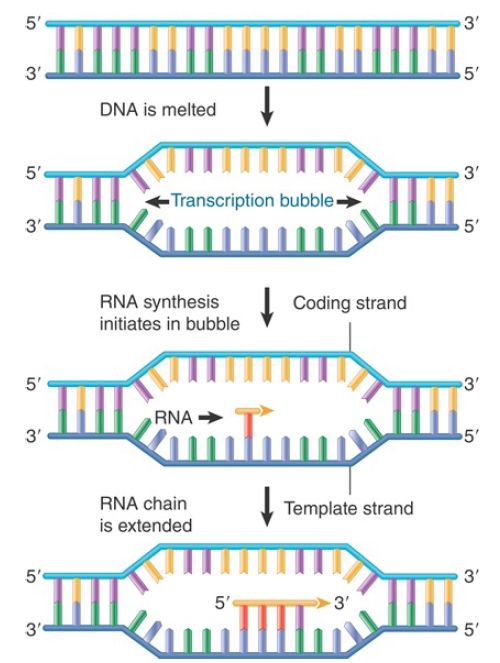

النبات

مواضيع عامة في علم النبات

الجذور - السيقان - الأوراق

النباتات الوعائية واللاوعائية

البذور (مغطاة البذور - عاريات البذور)

الطحالب

النباتات الطبية


الحيوان

مواضيع عامة في علم الحيوان

علم التشريح

التنوع الإحيائي

البايلوجيا الخلوية


الأحياء المجهرية

البكتيريا

الفطريات

الطفيليات

الفايروسات


علم الأمراض

الاورام

الامراض الوراثية

الامراض المناعية

الامراض المدارية

اضطرابات الدورة الدموية

مواضيع عامة في علم الامراض

الحشرات


التقانة الإحيائية

مواضيع عامة في التقانة الإحيائية


التقنية الحيوية المكروبية

التقنية الحيوية والميكروبات

الفعاليات الحيوية

وراثة الاحياء المجهرية

تصنيف الاحياء المجهرية

الاحياء المجهرية في الطبيعة

أيض الاجهاد

التقنية الحيوية والبيئة

التقنية الحيوية والطب

التقنية الحيوية والزراعة

التقنية الحيوية والصناعة

التقنية الحيوية والطاقة

البحار والطحالب الصغيرة

عزل البروتين

هندسة الجينات


التقنية الحياتية النانوية

مفاهيم التقنية الحيوية النانوية

التراكيب النانوية والمجاهر المستخدمة في رؤيتها

تصنيع وتخليق المواد النانوية

تطبيقات التقنية النانوية والحيوية النانوية

الرقائق والمتحسسات الحيوية

المصفوفات المجهرية وحاسوب الدنا

اللقاحات

البيئة والتلوث


علم الأجنة

اعضاء التكاثر وتشكل الاعراس

الاخصاب

التشطر

العصيبة وتشكل الجسيدات

تشكل اللواحق الجنينية

تكون المعيدة وظهور الطبقات الجنينية

مقدمة لعلم الاجنة


الأحياء الجزيئي

مواضيع عامة في الاحياء الجزيئي


علم وظائف الأعضاء


الغدد

مواضيع عامة في الغدد

الغدد الصم و هرموناتها

الجسم تحت السريري

الغدة النخامية

الغدة الكظرية

الغدة التناسلية

الغدة الدرقية والجار الدرقية

الغدة البنكرياسية

الغدة الصنوبرية

مواضيع عامة في علم وظائف الاعضاء

الخلية الحيوانية

الجهاز العصبي

أعضاء الحس

الجهاز العضلي

السوائل الجسمية

الجهاز الدوري والليمف

الجهاز التنفسي

الجهاز الهضمي

الجهاز البولي


المضادات الميكروبية

مواضيع عامة في المضادات الميكروبية

مضادات البكتيريا

مضادات الفطريات

مضادات الطفيليات

مضادات الفايروسات

علم الخلية

الوراثة

الأحياء العامة

المناعة

التحليلات المرضية

الكيمياء الحيوية

مواضيع متنوعة أخرى

الانزيمات
Transcription Occurs by Base Pairing in a “Bubble” of Unpaired DNA
المؤلف:
JOCELYN E. KREBS, ELLIOTT S. GOLDSTEIN and STEPHEN T. KILPATRICK
المصدر:
LEWIN’S GENES XII
الجزء والصفحة:
3-5-2021
3923
Transcription Occurs by Base Pairing in a “Bubble” of Unpaired DNA
KEY CONCEPTS
- RNA polymerase separates the two strands of DNA in a transient “bubble” and uses one strand as a template to direct synthesis of a complementary sequence of RNA.
- The bubble is 12 to 14 bp, and the RNA–DNA hybrid within the bubble is 8 to 9 bp.
Transcription utilizes complementary base pairing, in common with the other polymerization reactions: replication and translation. FIGURE 1 illustrates the general principle of transcription. RNA synthesis takes place within a “transcription bubble,” in which DNA is transiently separated into its single strands and the template strand is used to direct synthesis of the RNA strand.

FIGURE 1. DNA strands separate to form a transcription bubble. RNA is synthesized by complementary base pairing with one of the DNA strands.
The RNA chain is synthesized from the 5′ end toward the 3′ end by adding new nucleotides to the 3′ end of the growing chain. The 3′–OH group of the last nucleotide added to the chain reacts with an incoming nucleoside 5′–triphosphate. The incoming nucleotide loses its terminal two phosphate groups (γ and β); its α group is used in the phosphodiester bond linking it to the chain. The overall reaction rate for the bacterial RNA polymerase can be as fast—about 40 to 50 nucleotides per second at 37°C for most transcripts; this is about the same as the rate of translation (15 amino acids per second), but much slower than the rate of DNA replication (approximately 800 bp per second).
RNA polymerase creates the transcription bubble when it binds to a promoter. FIGURE 2 illustrates the RNA polymerase moving along the DNA, with the bubble moving with it and the RNA chain growing in length. The process of base pairing and base addition within the bubble is catalyzed and scrutinized by the RNA polymerase itself.

FIGURE 2. Transcription takes place in a bubble, in which RNA is synthesized by base pairing with one strand of DNA in the transiently unwound region. As the bubble progresses, the DNA duplex reforms behind it, displacing the RNA in the form of a single polynucleotide chain.
The structure of the bubble within the transcription complex is shown in the expanded view of FIGURE 3. As RNA polymerase moves along the DNA template, it unwinds the duplex at the front of the bubble (the unwinding point), and the DNA automatically reforms the double helix at the back (the rewinding point). The length of the transcription bubble is about 12 to 14 bp, but the length of the RNA–DNA hybrid within the bubble is only 8 to 9 bp.
As the enzyme moves along the template, the DNA duplex reforms, and the RNA is displaced as a free polynucleotide chain. The last 14 ribonucleotides in the growing RNA are complexed with the DNA and/or the enzyme at any given moment.

FIGURE 17.5 During transcription, the bubble is maintained within bacterial RNA polymerase, which unwinds and rewinds DNA and synthesizes RNA.
 الاكثر قراءة في مواضيع عامة في الاحياء الجزيئي
الاكثر قراءة في مواضيع عامة في الاحياء الجزيئي
 اخر الاخبار
اخر الاخبار
اخبار العتبة العباسية المقدسة

الآخبار الصحية















 قسم الشؤون الفكرية يصدر كتاباً يوثق تاريخ السدانة في العتبة العباسية المقدسة
قسم الشؤون الفكرية يصدر كتاباً يوثق تاريخ السدانة في العتبة العباسية المقدسة "المهمة".. إصدار قصصي يوثّق القصص الفائزة في مسابقة فتوى الدفاع المقدسة للقصة القصيرة
"المهمة".. إصدار قصصي يوثّق القصص الفائزة في مسابقة فتوى الدفاع المقدسة للقصة القصيرة (نوافذ).. إصدار أدبي يوثق القصص الفائزة في مسابقة الإمام العسكري (عليه السلام)
(نوافذ).. إصدار أدبي يوثق القصص الفائزة في مسابقة الإمام العسكري (عليه السلام)


















